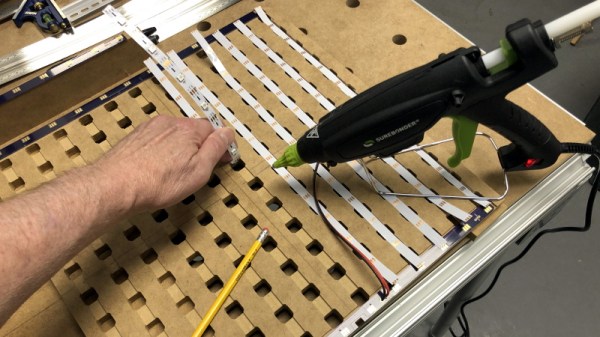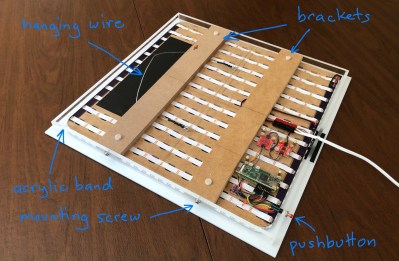Ah, the 5mm LED. Once a popular choice, they’ve been supplanted in modernity by smaller SMD components and/or more capable RGB parts in recent years. However, they’re still able to do the job and are a great way to give your project that proper homebrew look. [Ian Dunn] chose those very parts to produce his 4017 Decade Binary Clock.
The clock uses only digital logic ICs to tell the time – there are no microcontrollers here! After four or five iterations over almost a whole year, [Ian] was finally able to coax the circuit into reliable operation. As you’d expect, it relies on a 32.768 kHz crystal to provide a stable clock. Fed into a 4060 binary ripple counter, that clock is divided down 14 times to deliver a 2Hz square wave. This then goes through a 4027 flip flop to get the desired 1Hz signal. From there, a bunch of extra logic handles counting the seconds, minutes, and hours, and resetting the counters as appropriate.
The PCB that houses the project is printed on directly by a flatbed inkjet printer, which [Ian] purchased when inspired by our previous article on how to get your PCBs made at the mall. He didn’t actually use it to make the PCB in this case, but the flatbed printer does a great job of putting graphics on the board.
The result is quite an attractive look that might surprise a few electronics enthusiasts who haven’t seen a graphic printed board before. It’s a technique we think could be used to great effect on conference badges, too. If you’ve experimented with similar techniques, be sure to drop us a line!





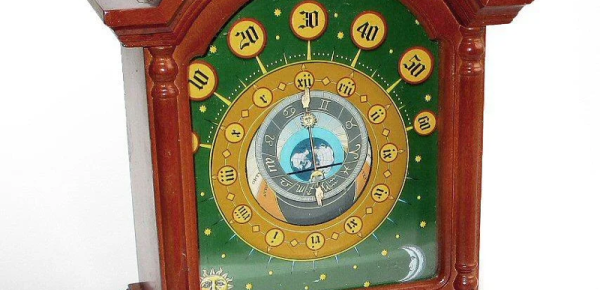
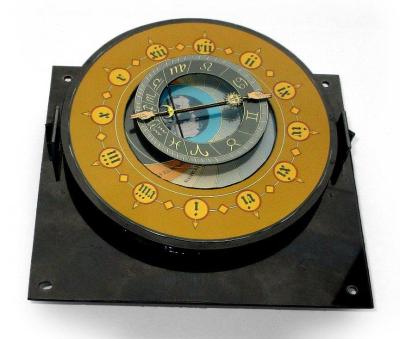

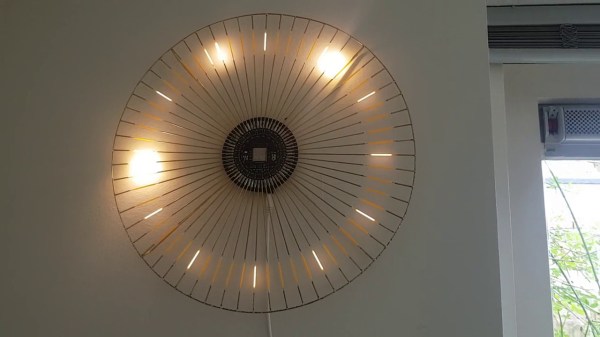
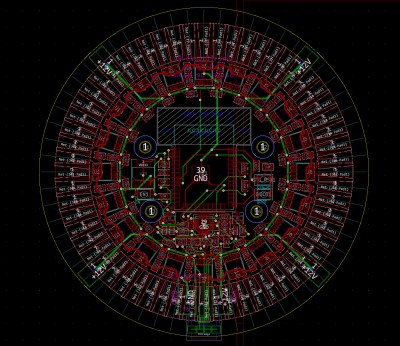 WS2811 LED controllers, which we’re so accustomed to seeing alongside RGB LEDs that they almost feel strange to see here, provide the 12 volts required for each filament and make individual addressing a breeze.
WS2811 LED controllers, which we’re so accustomed to seeing alongside RGB LEDs that they almost feel strange to see here, provide the 12 volts required for each filament and make individual addressing a breeze.